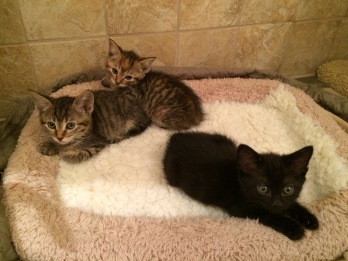I am in my 50s (how did that happen?). I did not grow up in the world of personal computers, cell phones, tablets, iPods, etc. It was with great excitement that my family bought a color television. The old black and white set was relegated to my mother’s bedroom, where it sat on her dresser with its wire coat hanger antenna. When one of us was sick (or pretending to be), we would camp in Mom’s room and watch from her bed. We didn’t have remote controls. As the youngest of 4 children, I was the human remote control (“Hey Gen, change the channel to Mannix.”)


A fun Friday night at the Cottraux house was eating TV dinners in front of Mannix. My teenaged sisters were usually out on dates, so it would be me, my brother, and Mom, each with a TV tray and the dinner of choice. I enjoyed these, surprisingly. They were considered a treat. My food tastes have changed, thank goodness!

None of us in the immediate family like to talk on the telephone. In fact, some of us (me) hate to talk on the telephone and have telephonophobia. This is a real thing, the fear of telephones, and is considered a form of social anxiety. But my teenaged sisters HAD to have their own phone in their bedroom. It was a beautiful Princess phone. I thought my sisters were so COOL and I wanted to be just like them. Still do in fact.

I had no interest in mobile phones when they came out. None. Plus they were huge and hideous.

I finally got a mobile phone in 2000 when I was working for California State Parks on a 7 a.m. – 3 p.m. shift and was often the first one at the park on cold, dark mornings. I justified it as a safety thing. I never talked on it. I had it for years. It didn’t even have games that I know of.

So how did I become the person at the summer residency program at the Institute for Humane Education in Surry, Maine who always had her iPhone in her pocket and had trouble setting it aside during activities?
I’ve written a little bit about the week in Maine:
I’m finally headed to summer camp…
This was a time to enjoy being in a beautiful natural setting with amazing people and at least 5 species of awesome frogs. It was not a time to be worrying about where to charge a phone. Some of my favorite activities:
The Bioblitz Dance (Bioblitz Dance)
The Bioblitz Dance is an ongoing “dance” challenge as part of the National Park Service’s Centennial. The dance was created by John Griffith of the California Conservstion Corps. You too can do the Bioblitz, and post the video to YouTube under the title “The Bioblitz Dance”. It’s fun! And remember, it MUST be done outdoors.
Seton Watching (Go Out and Seton Watch!)
At first I heard the name of this activity as Seated Watching. Ernest Thompson Seton (1860-1946) was a naturalist and wildlife artist, born in England to Scottish parents. His family emigrated to Toronto, Canada when he was a child. He reportedly retreated to the woods to escape his abusive father.

The idea is pretty simple. Find a comfortable spot outdoors, sit quietly, and observe. Each of us chose a spot, and every day for the week we had varying lengths of time set aside to go sit and observe. You might think my spot was the frog pond, but it wasn’t. I did my own version of Seton watching in the early morning hours at the pond. My “official” Seton watch spot was in a hammock under the trees at the edge of the meadow leading to the pond. My first choice was actually an old school desk in the woods, but I couldn’t remember which trail went there, and the hammock was empty and close by.

The instruction was to observe a spot about the size of a magazine spread, but since I was looking up into the tree canopy, it was a little different. But still amazing. The play of light through the leaves varied each day depending on time and weather. The sounds of the wind through the trees (I think they were birches) was always intriguing. I could hear birds all around me but I couldn’t see them. I stayed awake. And I didn’t look at my phone.
Wonder Walk (Wonder Walk instructions)
Wonder Walking is done in pairs, with each person taking a turn as the Leader and as the Follower. We did this on the first day when we really didn’t know each other, so there was an element of trust that had to be assumed in turning yourself over to a stranger to be led eyes closed. The odd thing is that I was much more relaxed as the Follower than I was as the Leader. Maybe not that odd, when I think about it!


If you are at all curious about Wonder Walking, I am game to go on one with you. Just let me know!
Group Outdoor Art Project
When this activity was announced, my first reaction was “Can’t I do an art project by myself?” Once a loner, always a loner.( I am trying to prove that wrong in my old age.) As an art museum registrar, I found it particularly interesting that all of the groups chose to do ephemeral, performance pieces. Some involved sound, including music created with natural objects in the environment. Flowers played a big role in other offerings. My group did a participatory, silent piece that resulted in a bird bath filled with flowers. It was quite beautiful. And I enjoyed the group process more than I admit.

Also highly recommended: eating your meals with friends out of doors. And campfires with campsongs (learn the lyrics to Señor Don Gato; you’ll thank me) and (vegan) S’mores.




Get outside, and please, turn off your electronic devices!































































